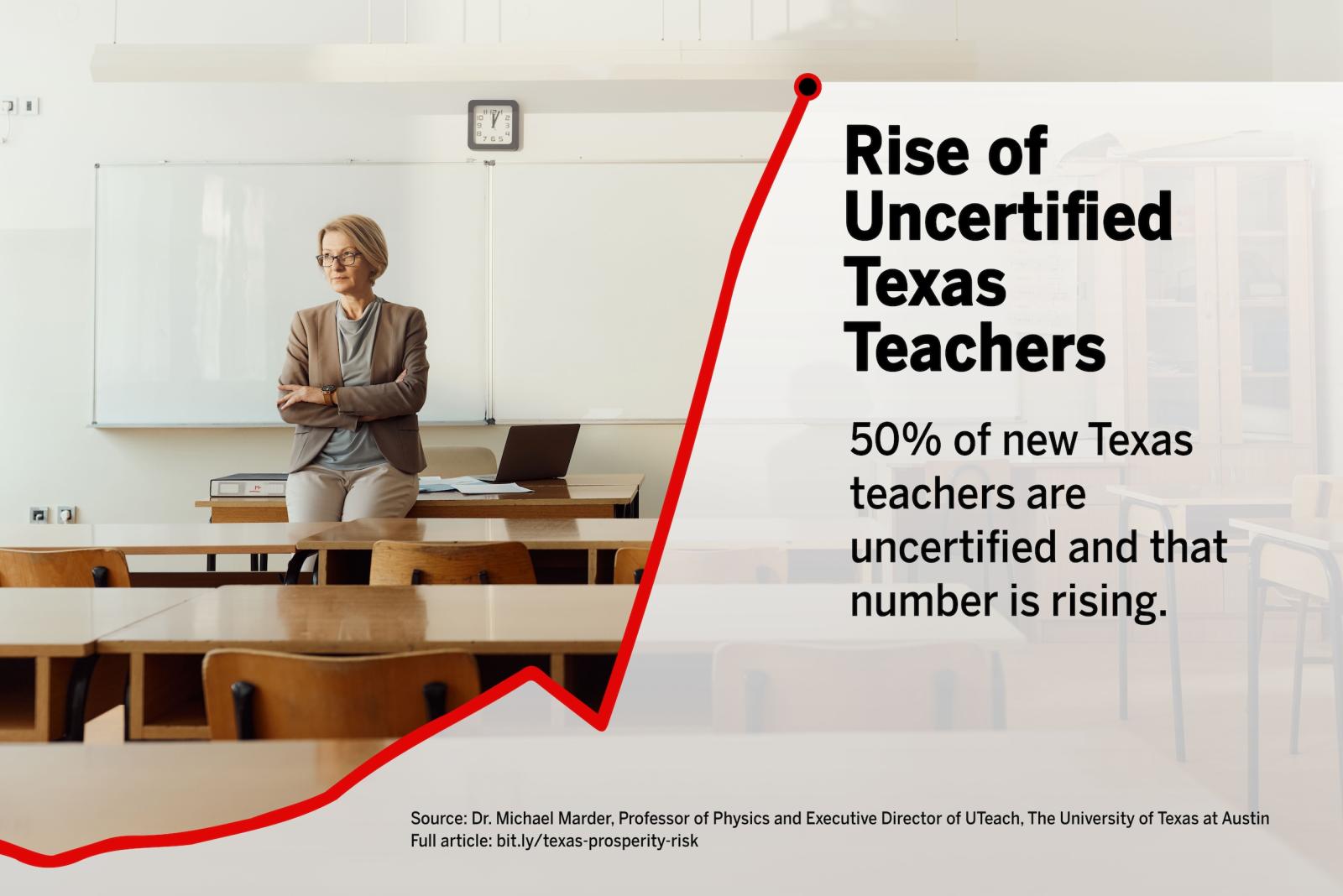
We provide these resources to help you communicate with district leaders, regional representatives, and others.
Communicate the Need for More Certified Teachers
Texas education has passed an unfortunate milestone. Half of the state’s new teachers are not certified. This has cascading effects on industry and prosperity in Texas.
In a new policy brief, Dr. Michael Marder, Executive Director of UTeach and Professor of Physics at The University of Texas at Austin, communicates the urgency with which Texas must address the growing gap in the state’s production of certified teachers vs use of uncertified, underprepared teachers.
Strengthening Pathways into the Teaching Profession in Texas: Challenges and Opportunities
This report reviews the emerging research, describes the substantial efforts Texas leaders and institutions are making to address concerns about workforce preparation and stability, and provides additional actionable, research-based policy recommendations.
Beyond the Tipping Point
According to statewide data, the trend of newly hired uncertified teachers has grown since 2020 as an already existing teacher shortage was exacerbated by the COVID-19 pandemic, and schools raced to fill empty classrooms and meet student needs. Now, researchers warn that hiring uncertified teachers is not an effective solution, as new findings show that uncertified teachers are leaving the classroom sooner, districts are overwhelmed with teaching their teachers to teach, and students are negatively impacted.
Four Ways to Stop Teacher Turnover
A lot of educational reformers today have viewed teacher retention and turnover as more of a human capital problem: We replace ineffective teachers with teachers who are more effective, and that’s going to lead to school improvement,” said Jennifer Holme, a professor of educational policy and planning at the University of Texas at Austin and co-author of the study. “But this perspective really fails to consider the social impacts of turnover on schools."
Calculate the Cost of Teacher Turnover
Use the interactive calculator in this report from the Learning Policy Institute to determine the cost of teacher turnover in your school system. Build a case for investing in a partnership with a high-quality program like UTeach for Texas.
The 2024 Texas Teachers Poll
Each year, the Charles Butt Foundation surveys Texas teachers on leading issues, challenges, and bright notes of the profession. Visit their Teacher Poll website to download the report and other resources.
19 TAC Chapter 228 Updates for School Systems
This recorded webinar from TEA includes information about the new rules for teacher preparation in Texas.
Stay Connected with Our Newsletter
View Past Newsletters
Edition No. 1 (October 2024)
Edition No. 2 (November/December 2024)
Edition No. 3 (April/May 2025)

